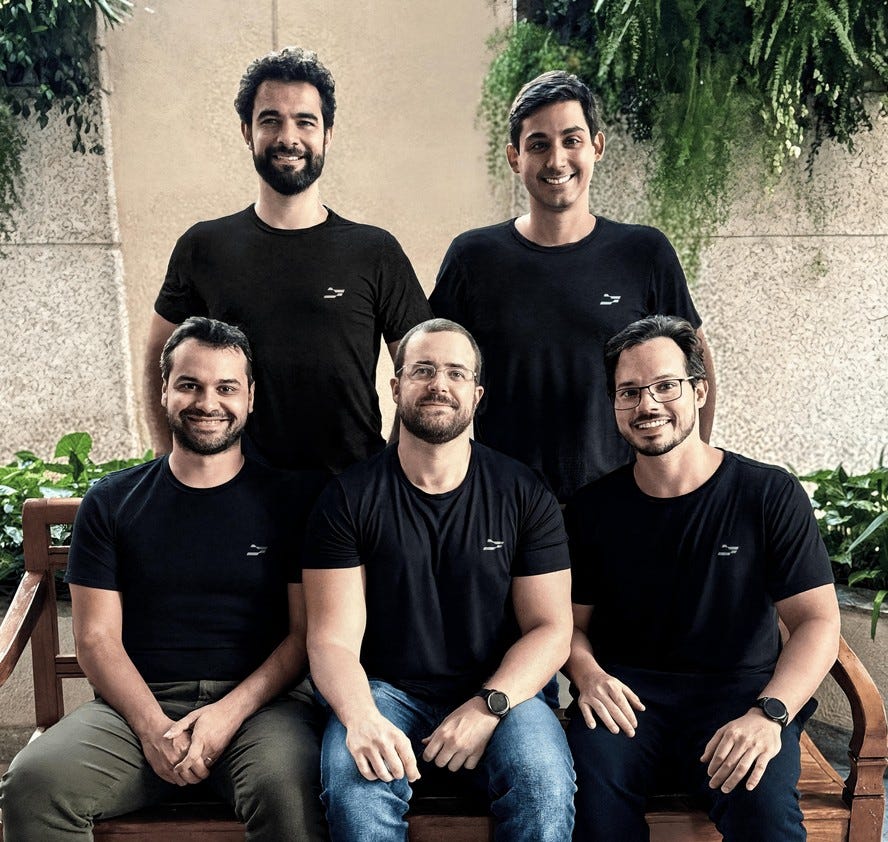The Stablecoin Promise (And Unveiling Our Latest Investment)
Meet Avenia: our latest investment: the Bridge + Tether of Brazil

I bought my first bitcoin in 2013. Like many, I was captivated by the promise of decentralized finance. But while I’ve dabbled in the space for over a decade in my personal capacity, as a professional investor, I never had the confidence to invest someone else’s money in the sector—until now.
At Fluent Ventures, we’ve avoided the speculative mania. Instead, we’ve focused on areas where this new infrastructure might offer 10x better solutions than its analog counterparts. Over the last few years, we’ve been excited about one intersection of crypto and decentralized finance: stablecoins. With Avenia, in Brazil, we have made our first investment.
The Rise of Stablecoins: A Quiet Revolution
Amid the noise of volatile tokens and meme coins, stablecoins have quietly become one of the most practical and widely adopted use cases in crypto. Pegged to fiat currencies like the U.S. Dollar or Brazilian Real, they offer the best of both worlds: the trust and familiarity of traditional currency, and the speed and flexibility of blockchain rails.
Stablecoins have exploded in use around the world.


International transfers via stablecoin rails offer three specific and concrete benefits:
Settlement is near-instant, enabling real-time global transactions. Cross-border wires can take a few days to clear.
Transactions are transparent, powering greater visibility. If you send money from the U.S. to France via traditional networks, a customer quite literally has no idea who has your money at a specific moment in time. On stablecoin rails, it is visible in real-time.
Fees are significantly lower, especially compared to SWIFT, Western Union, or traditional remittance channels. Even when comparing to next gen platforms like Wise (which I use) stablecoins avoid the need for a FX provider to hold balances in multiple geographies for “netting” (Wise and others do not move all the money back and forth, instead they only move the net balances of all the back-and-forth wires.)

Stablecoin volumes haven’t just increased. A number of new use cases have emerged across B2B payments, payroll, international invoicing, and even treasury management. In emerging markets, stablecoins are creating new opportunities for customers or businesses to hold balances in hard currencies without the need to open local accounts. Expect a longer post on this soon.
The Required Plumbing: Proven Models
For stablecoins to work, one key piece of infrastructure is required: compliant on-off ramps, that are easy to access, with programmable workflow tools. And in markets where local stablecoins are not offered, these may be needed.
The value of this infrastructure is already being demonstrated globally:
Bridge was acquired by Stripe in 2024 for $1.1 billion. The company built stablecoin-based payment APIs that allows enterprises to integrate crypto-native rails seamlessly into traditional workflows.
Circle, the issuer of USDC, is going public. Its growth reflects increasing institutional trust in stablecoin-backed infrastructure. USDC is now used by major fintechs, banks, and enterprises for a wide range of financial operations.
Tether, the issuer of USDT, is the world’s most profitable company on a per-employee basis. With a small team and massive adoption, Tether quietly generates billions in net income, underlining the power of well-executed infrastructure.
Avenia: Building Stablecoin Infrastructure for Brazil
Our thesis on Avenia is that similar infrastructure will be required in many markets around the world. Avenia is focused on Brazil. The company is building stablecoin rails and a digital BRL token—a localized version of what has worked globally, tailored for the unique dynamics of Brazil.
The founding team brings experience from Brazil’s top fintechs (Nubank, BTG Pactual), global crypto platforms like Coinbase, and even running a crypto hedge fund. They blend regulatory fluency with technical execution—a rare combination in any market.
Brazil is a particularly compelling geography for this model. It’s home to one of the most dynamic fintech user bases in the world. It is deeply integrated with the world economy. The regulatory environment is sophisticated, complex, and open to cryptocurrencies.
In under 12 months, they have already processed R$ 3 billion across 2 million transactions, and are profitable. When we invested, they had more cash in their bank account than when they started!
Why We Believe There is GeoAlpha with Avenia
At Fluent, we back globally inspired companies tailored to local ecosystems. We look for models that are proven, but where the edge comes from nuanced execution on the ground.
Avenia fits squarely into that approach:
A proven model. We’ve seen this playbook before, and we know how powerful it can be.
A Local winner is likely. For this business model and in financial infrastructure more broadly, we believe trust, regulatory know-how, and local integrations create strong moats.
Early traction. Avenia has had explosive “camel” like growth with profitable unit economics and managed burn.
Co-investment with a local leader. Excited to partner with big_bets, one of our favorite local coinvestors.
Stage-aligned. We’re investing early, where we can be most valuable as a partner.
What Comes Next
We believe Avenia represents a broader shift, not just a bet on Brazil or stablecoins, but a deeper belief in infrastructure-first models operating at the intersection of crypto and decentralized finance.
We’re thrilled to be on this journey with Avenia. If you are building something similar elsewhere, we’d love to hear from you. We are open to partnering with several teams in the same category across different geographies.
![[99%Tech]](https://substackcdn.com/image/fetch/$s_!Vpj7!,w_80,h_80,c_fill,f_auto,q_auto:good,fl_progressive:steep,g_auto/https%3A%2F%2Fsubstack-post-media.s3.amazonaws.com%2Fpublic%2Fimages%2F288cd65c-980f-4acb-8182-1853ec1e444d_1280x1280.png)
